Related Research Articles
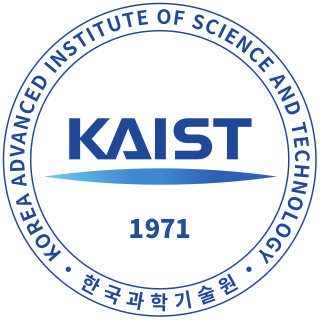
The Korea Advanced Institute of Science and Technology (KAIST) is a national research university located in Daedeok Innopolis, Daejeon, South Korea. KAIST was established by the Korean government in 1971 as the nation's first public, research-oriented science and engineering institution. KAIST is considered to be one of the most prestigious universities in the nation. KAIST has been internationally accredited in business education, and hosting the Secretariat of the Association of Asia-Pacific Business Schools (AAPBS). KAIST has 10,504 full-time students and 1,342 faculty researchers and had a total budget of US$765 million in 2013, of which US$459 million was from research contracts.

The TEMPUS program encourages higher education institutions in the EU Member States and partner countries to engage in structured cooperation through the establishment of "consortia". The "consortia" implement Joint European Projects (JEPs) with a clear set of objectives. Such projects may receive financial aid for two or three years. Tempus also provides Individual Mobility Grants (IMGs) to individuals working in Higher Education sector to help them work on certain specified activities in other countries.

The Belarusian State University of Informatics and Radioelectronics, also known as BSUIR, is a public Higher Education Institution accredited by the Ministry of Education of the Republic of Belarus. Nowadays it is a large educational and scientific complex in Minsk, Belarus. BSUIR was founded on March 15, 1964, and plays a leading role in preparing its students in the fields of computer science, radioelectronics and telecommunications in Belarus.

The National Technological University is a country-wide national university in Argentina, and considered to be among the top engineering schools in the country. Hosting over 85,000 students, its student body is comparable to Argentina's third-largest university and exceeded significantly only by the University of Buenos Aires (UBA). It has 29 semi-independent branches of various sizes located all over the country.

Kuban State Technological University, also referred to as the Kuban State University of Technology, is a Russian public technical university located in Krasnodar, one of the first higher educational institutions established in the southern region of Russia.

The National Polytechnic University of Armenia is a technical university located in Yerevan, Armenia. Established as the Karl Marx Institute of Polytechnic in 1933, it provides educational and research programs in various fields of technology and science related to engineering. The university includes a central campus in Yerevan and branch campuses located in Gyumri, Vanadzor and Kapan. Currently there are more than 8,000 students and more than 750 faculty members.
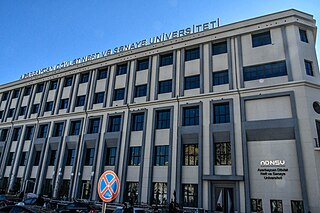
Azerbaijan State Oil and Industrial University is a tertiary education institution in Baku, Azerbaijan.
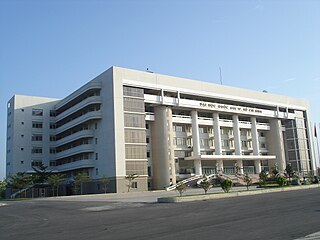
Viet Nam National University Ho Chi Minh City is one of the two largest national research universities in Vietnam, founded on 27 January 1995, and reorganized on 12 February 2001, under the Decision no. 15/2001/QĐ-TTg by the Prime Minister of Vietnam Phan Văn Khải. The university now provides undergraduate and graduate education to 56,427 students, including:

The Gubkin Russian State University of Oil and Gas is a public university in Moscow, Russia. The university was founded in 1930 and is named after the geologist Ivan Gubkin. The university is colloquially known as Kerosinka, meaning 'kerosene stove'.

Saint Petersburg Electrotechnical University "LETI" is a public university and one of the oldest Russian higher education institutions.

MIREA — Russian Technological University is The Federal State Budget Educational Institution of Higher Education «MIREA — Russian Technological University». It is a higher educational institution in Moscow, Russia, which is a modern educational, research and innovation complex.

Ulyanovsk State Technical University is a major technical higher education and research institution in Ulyanovsk. Founded in 1957 as Ulyanovsk Polytech University, the university is located in the Volga River region.
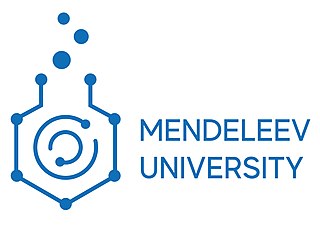
D. Mendeleev University of Chemical Technology of Russia (MUCTR) — is a federal state budgetary higher educational institution in Moscow, and is the largest Russian center for education and research in the field of chemical technology. The history of MUCTR can be traced back to the Moscow Industrial School initially founded in 1898. The university acquired its current name and status in 1992 with its Moscow campus mainly located on Miusskaya Square and in Tushino. The university's other two branches are situated in Novomoskovsk and Tashkent (Uzbekistan).

Moscow State University of Instrument Engineering and Computer Science (MSUIECS ; is one of the technical universities of Moscow and Russia. Founded in 1936 as the Moscow Correspondence Institute of the metal industry. MSUIECS offers a wide range of educational programs to prepare specialists, masters, bachelors, PhDs and doctors of different sciences.
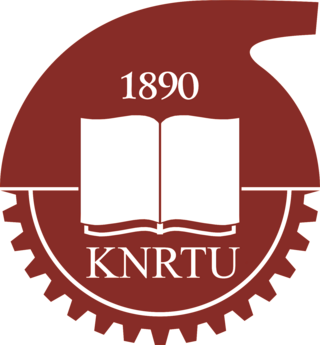
Kazan National Research Technological University, KNRTU is an innovational scientific educational complex. The University comprises 15 academic and research institutes; runs over 100 Specialist, Bachelor's, Master's Degree and Ph.D. programs; enrolls over 27,000 undergraduate and graduate students, 900 Ph.D. and 100 Post-Doc students from Russia and other countries; employs over 300 Full Professors, Doctors of Science and 800 Associate Professors, Ph.D.s; raises the budget of 1.4 billion rubles.

Oryol State University or Turgenev State University of Oryol, officially Orel State University named after I.S. Turgenev, formerly Oryol State Pedagogical Institute, is a university in Central Federal district of Russia in the city Oryol which is the Administrative centre of Oryol Oblast. OSU opened in 1931 as Industrial-Pedagogical Institute. Today OSU is a member of Association of the Classical Universities of Russia.

The Ural Federal University named after the first President of Russia B. N. Yeltsin is an educational institution in the Ural region of Russia and one of 10 Russian Federal Universities. It acts as a research and innovation center of the Ural region and cooperates with the Russian Academy of Sciences. UrFU offers educational programs in four areas of knowledge and 108 academic majors.

Tashkent State Technical University (TSTU) is one of the oldest universities of Uzbekistan. Currently, the university consists of 6 faculties, and prepares highly skilled professionals in technical and engineering fields. For this year, it is estimated to run 56 departments with over 10 746 students, who are taught by 6 academicians of the Academy of Sciences of Uzbekistan, 74 doctors of sciences and 314 candidates of sciences.

School of Astronautics, HIT is the Engineering school of Harbin Institute of Technology. The school is the first-ever school to initiate college education in astronautics discipline in China.
Vladimir State University is a higher educational institution in Vladimir, Russia. It is currently recognized as the largest university in Vladimir Oblast and one of the largest in the Central Federal District. In April 2017, it became one of the flagship universities of the region.
References
- ↑ "QS World University Rankings-Emerging Europe & Central Asia" . Retrieved 15 January 2023.
- ↑ Russia Energy Group of Companies. Partners. Retrieved 3 June 2013.
- ↑ RIA Novosti (16 October 2012). "Ливанов встретится с настроенными против объединения студентами ТГТУ" ("Livanov meets with students opposed to TSTU merger"). Retrieved 3 June 2013 (in Russian).
- 1 2 Dvoretskaya, E.; Dvoretsky, D.; Chernyshov, N. (2005). "Introduction of Bilingual Educational Programs in Tambov". Bi- and Multilingual Universities: Challenges for the Future, pp. 1-5. University of Helsinki conference, 1–3 September 2005. Retrieved 3 June 2013.
- ↑ Tambov State Technical University. About the University. Retrieved 3 June 2013.
- ↑ Shelenkova, Irina and Mishchenko, Elena (2012). "Innovative Language Curricula at Tambov State Technical University". Saratov State Technical University, International Conference on Information Technologies, International Conference on Information Technologies 2012. Retrieved 3 June 2013.